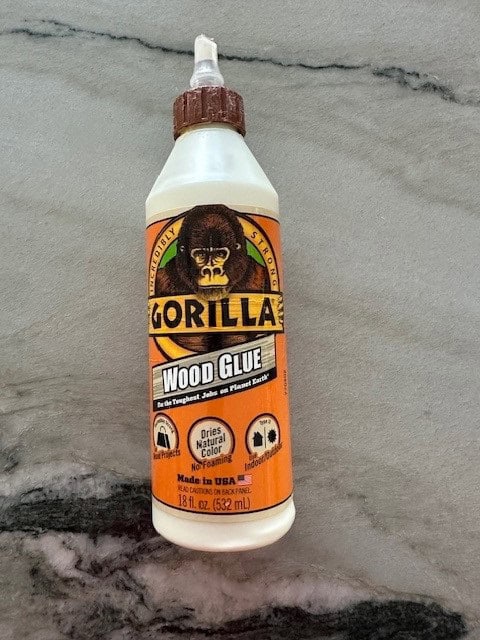Wood glue is an adhesive specifically designed for bonding pieces of wood together. It is a staple in woodworking, carpentry, and various DIY projects, providing a strong and durable bond that can withstand the stresses and strains of daily use. Wood glue penetrates the wood fibers, creating a tight bond that is often stronger than the wood itself.
History of Wood Glue
The use of wood glue dates back thousands of years, with early adhesives made from natural materials like animal hides, fish bladders, and tree sap. Ancient Egyptians used glues made from animal collagen to build wooden furniture and artifacts. Over time, the process of making glue evolved, and in the 20th century, synthetic adhesives were developed, revolutionizing the woodworking industry. These modern glues are formulated for various types of wood and conditions, offering increased strength, versatility, and ease of use.
Types of Wood Glue
- PVA (Polyvinyl Acetate) Glue: The most common type, often referred to as white or yellow glue, suitable for most woodworking projects.
- Hide Glue: Made from animal collagen, available in liquid or solid form, ideal for antique furniture restoration.
- Epoxy: A two-part adhesive that provides a strong bond, excellent for filling gaps and bonding non-wood materials to wood.
- Polyurethane Glue: Expands as it cures, making it suitable for irregular joints and various materials.
- Cyanoacrylate (CA) Glue: Also known as super glue, it provides a quick bond for small parts or temporary fixtures.
- Urea-Formaldehyde Glue: Commonly used in woodworking for strong, heat-resistant bonds, especially in plywood and veneer.
Key Features of Wood Glue
- Strength: Offers a bond often stronger than the wood itself.
- Versatility: Suitable for various wood types and conditions.
- Water Resistance: Some wood glues are waterproof or water-resistant, ideal for outdoor projects.
- Curing Time: Varies between types, allowing for quick fixes or more precise work.
- Gap Filling: Certain glues can fill gaps, useful in imperfect joints.
- Ease of Use: Available in different formulations for different skill levels.
Choosing the Right Wood Glue
Selecting the right wood glue depends on the specific needs of your project. For general woodworking, PVA glue is often sufficient due to its ease of use and strength. If you’re working on outdoor furniture, polyurethane glue’s water resistance might be preferable. For intricate work or antique restoration, hide glue offers the advantage of reversibility. Understanding the characteristics of each type will help you make an informed decision.
Wood Glue Recommendations
Proper Use and Techniques
To achieve the best results, apply wood glue evenly to both surfaces being bonded. Clamp the pieces together to ensure a tight fit and allow the glue to cure fully, following the manufacturer’s recommended time. Avoid using excessive glue, as this can cause weak joints and mess. For stronger bonds, ensure that the wood surfaces are clean and dry before application.
Maintenance and Care
Proper storage of wood glue is crucial to maintain its effectiveness. Keep it in a cool, dry place, tightly sealed to prevent contamination or drying out. Most wood glues have a shelf life, so check the expiration date before use. Clean the applicator tips after each use to prevent clogging and ensure smooth application in the future.
Safety Tips
When working with wood glue, especially those with strong chemicals like epoxy or polyurethane, always use in a well-ventilated area. Wear gloves to protect your skin, and avoid inhaling fumes. In case of contact with skin or eyes, follow the safety instructions on the product label. Dispose of any unused glue according to local regulations to minimize environmental impact.
Conclusion
Wood glue is an essential tool for any DIY enthusiast or professional woodworker. Understanding the different types, proper usage, and safety precautions will help you achieve the best results in your projects. Whether you’re repairing a piece of furniture or building something from scratch, choosing the right wood glue ensures a strong, lasting bond.


